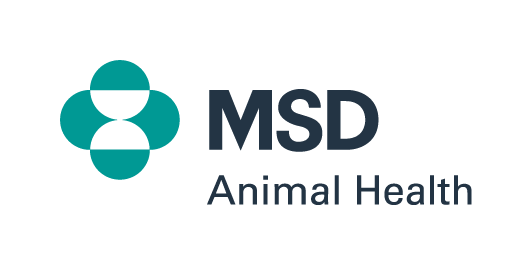What’s Ahead for Livestock Farming in the European Union

The European Commission’s approval of each member state’s Strategic Plan in December marks the start of the new Common Agricultural Policy (CAP), a 60-year-old funding framework that helps member states support farmers and guarantee a steady food supply for the continent’s residents.[1] [2]
Under the CAP process, Brussels sets broad objectives and member states craft their own agricultural policy around them. While sustainable European food security remains the guiding spirit, other goals have also taken on a new urgency. These include environmentally friendly agricultural practices, decent living standards for farmers, and animal welfare.[3]
Member states can help meet E.U. objectives in all these areas by channeling CAP funds toward something called precision livestock farming. This approach relies on cutting-edge technologies to collect food-related data — and could revolutionize relations between farmers, the animals they raise, and consumers.
Europeans want to know the story behind the food on their plates. A recent survey of people in Germany, France, Italy, Spain, and Czechia found that nearly eight in 10 consumers have scanned a QR code on a food or drink product to learn more. Nine of 10 favor regulations requiring accuracy in digital product information.[4]
Uniform food labeling standards also can satisfy Europeans’ increasing interest in animal welfare. A recent survey found that 83% of Europeans support labels for animal products that meet welfare criteria on the farm and during transport.[5] [6]
But labeling doesn’t have to be a hassle, thanks to new technologies that track livestock products from the farm to the slaughterhouse to the supermarket shelf.
E-identification tools like collars and ear-tags provide reliable information about each animal throughout the process.[7] [8] Cloud-based swine traceability technologies, for instance, let farmers track their pigs’ genetics, vaccination status, weight, and age — among other biological factors — in real time.[9] Similar systems exist for cows and poultry.[10] [11]
Ireland and Denmark have already mandated digital identification and tracking systems for animals.[12] Thanks to CAP guidance and funding, other member states will have a chance to put collars, ear-tags, and other innovative technologies in farmers’ hands. These investments would also help member states work toward standardizing labeling requirements.
In addition, precision livestock farming improves animal health by helping farmers track and respond to disease more effectively.[13]
The latest poultry-farming technology, for example, feeds real-time data — including individual birds’ weight, water consumption, and carbon dioxide levels — into an analytics platform, where it’s ready when a veterinarian arrives.[14] Quick access to this kind of information can put sick animals on a speedier path to recovery and reduce the spread of disease.
New technologies can promote the well-being of entire species. When an animal behaves abnormally, farmers receive an alert — which means they can treat an animal with a potential disease earlier rather than waiting for crippling infections to set in.[15] [16] That, in turn, ensures responsible use of antimicrobials — and reduces the chances a bacterial strain will develop to resist available medications.[17]
Finally, connected technologies can make life as a farmer less burdensome. Raising livestock requires long hours and significant hands-on time. Yet agricultural workers make 40% less than employees in other industries.[18]
Burnout and financial uncertainties threaten European farmers’ mental health. The European Agency on Safety and Health at Work found that stress and psychosocial issues in the agriculture sector are risks for workers and haven’t been adequately addressed.[19]
Precision livestock farming can help farmers overcome these challenges and make sure that they get most out of each hour they log. And they can count on the technology to keep an eye on their animals even when they’re busy elsewhere on the farm.
These benefits are particularly important, as the number of people working in agriculture declines even as the global population increases and efficiencies in food production improve. Collectively, we’re depending on fewer farmers to deliver more food in a sustainable way. We’ll need to realize technology-driven gains in productivity to make that possible.
Under the new CAP, EU member states can direct funds toward technologies that advance the welfare of animals, the livelihood of farmers, and the trust of consumers. Precision livestock farming can do just that.
Jeroen van de Ven, DVM, a practicing veterinarian based in Belgium, is Vice President, Global Marketing and Commercial Services, MSD Animal Health.
[1] https://www.agriland.ie/farming-news/eu-commission-approves-all-28-cap-strategic-plans/
[2] https://ec.europa.eu/commission/presscorner/detail/en/ip_22_7639
[3] https://agriculture.ec.europa.eu/common-agricultural-policy/cap-overview/new-cap-2023-27_en
[4] https://spirits.eu/media/press-releases/digital-labels-new-survey-shows-a-majority-of-european-consumers-regularly-use-e-labels-to-access-product-information
[5] https://www.brusselstimes.com/216707/animal-welfare-how-should-eu-labelling-look-like
[6] https://ec.europa.eu/info/law/better-regulation/have-your-say/initiatives/12950-Animal-welfare-revision-of-EU-legislation/public-consultation_en (download)
[7] Animal Origin Policy Paper, p. 2
[8] https://www.msd-animal-health.com/animal-health-intelligence/allflex-livestock-intelligence/
[10] PLF event MSD Slides, slide 4
[11] https://poultrysenseltd.com/how-can-the-poultry-sense-solution-benefit-farmers/
[12] Animal Origin Policy Paper, p. 1
[13] https://www.sciencedirect.com/science/article/pii/S1751731121002755
[14] https://poultrysenseltd.com/how-can-the-poultry-sense-solution-benefit-farmers/
[15] https://www.eaplf.eu/wp-content/uploads/ECPLF_19_book.pdf#page=652
[16]https://www.sciencedirect.com/science/article/pii/S1751731121002755#:~:text=These%20devices%20offer%20farmers%20real%2Dtime%20monitoring%20of%20animal%20welfare%2C%20building%20up%20historical%20activity%20trends%20at%20the%20animal%20and%20herd%20levels%2C%20thus%20alerting%20the%20farmer%20to%20abnormal%20behaviour.
[17] https://www.eaplf.eu/wp-content/uploads/ECPLF_19_book.pdf#page=654
[18] https://agriculture.ec.europa.eu/common-agricultural-policy/cap-overview/cap-glance_en#thenewcap:~:text=despite%20the%20importance%20of%20food%20production%2C%20farmers%E2%80%99%20income%20is%20around%2040%25%20lower%20compared%20to%20non%2Dagricultural%20income%3B
[19] https://osha.europa.eu/en/publications/summary-future-agriculture-and-forestry-implications-managing-worker-safety-and-healt-0 (download)
